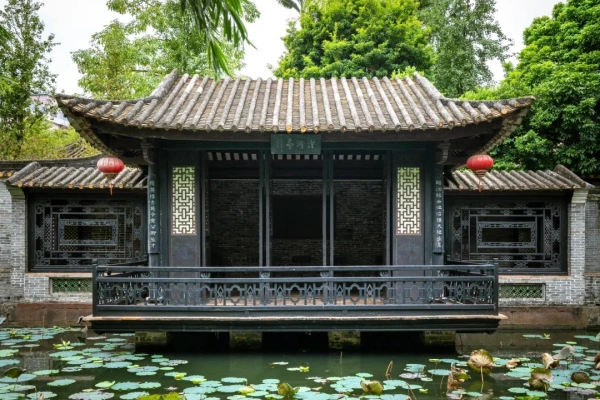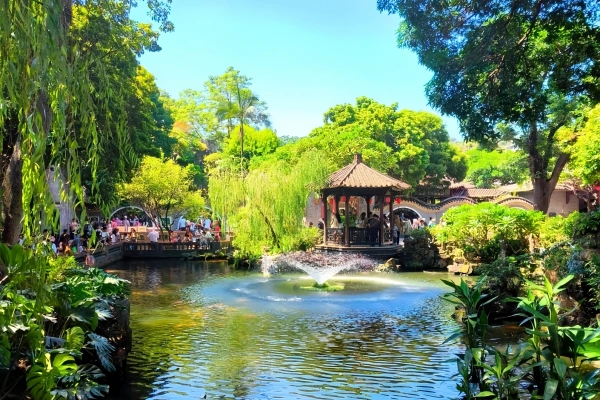Shunde Qinghui Garden
Historical Background
1503: Originally built as a private residence by Huang Xishan, a high-ranking official, and named "Taoyuan."
1593: Renamed "Qinghui Garden" by Huang Shijun, who expanded its layout and added literary halls.
1805: Restored and enhanced by scholar Long Yingtian, incorporating Lingnan-style carvings and gardens.
1959: Opened to the public after government-led renovations.
1990s–2020s: Underwent multiple preservation projects, including the 2013 restoration of the "Eight Scenes of Qinghui" pavilions.

Architectural Features
The garden’s layout emphasizes symmetry and fluidity, divided into three main sections:
Residential Area: Features the "Shipin Hall," a wooden structure with exquisite Lingnan-style carvings, and the "Penjing Garden," showcasing miniature bonsai landscapes.
Water Garden: Centered around the "Lotus Pond," with bridges, pavilions, and rockeries reflecting in the water.
Hill Garden: Highlights include the "Fenglai Peak," a man-made hill with winding paths and hidden grottos.CulturalHighlights
Eight Scenes of Qinghui: Iconic vistas like "Pavilion by the Pond" and "Moonlit Bamboo Grove," inspired by classical Chinese poetry.
Literary Inscriptions: Over 100 stone carvings and couplets by Ming-Qing scholars, including calligraphy by Kangxi Emperor.
Penjing Collections: A dedicated gallery displaying centuries-old bonsai trees, some over 300 years old.
Gardensand Pavilions
Penjing Garden: A showcase of Lingnan penjing art, with trees trained into intricate shapes.
Bamboo Grove: A serene pathway lined with bamboo, leading to the "Lotus Pavilion."
Eight-Diagram Pavilion: An octagonal structure offering panoramic views of the garden.
Shipin Hall: A grand reception hall with carved wooden beams and gilded decorations.
Seasonal Charm
spring: Cherry blossoms and azaleas bloom, painting the garden in pinks and reds.
Summer: Lotus flowers float on the pond, while water lilies add vibrant hues.
autumn: Osmanthus trees emit a sweet fragrance, and maple leaves turn golden.
Winter: Bamboo and pine trees remain evergreen, symbolizing resilience.
Visitor Experiences
Guided Tours: 1-hour tours in English/Chinese (¥80–150), exploring the garden’s history and design.
tea Ceremonies: Traditional Lingnan tea tastings in the "Pavilion of Fragrant Herbs."
Cultural Workshops: Hands-on activities like calligraphy, seal carving, and bonsai styling.
Night Illuminations: Seasonal light displays transforming the garden into a magical wonderland.

Practical Information
Opening Hours: 9:00 AM–5:30 PM (last entry 5:00 PM); closed Mondays.
Ticket Prices: ¥15 (adults), ¥7 (students/seniors), free for children under 1.2m.
How to Get There:
By Subway: Line 3 to "Daliang Zhongxin Station," then a 15-minute walk.
By Bus: Routes 301, 303, or 309 to "Qinghui Garden Stop."
By Taxi: Direct to "Qīnghuì Yuán".
Tips for Visitors:
Best Time: Early morning or late afternoon to avoid crowds.
Photography: Allowed (no flash); tripods prohibited in some areas.
Essentials: Wear comfortable shoes, bring water, and respect cultural sites.
Contact Us
What Our Clients Say?
Based on 10,000+ traveler reviews














